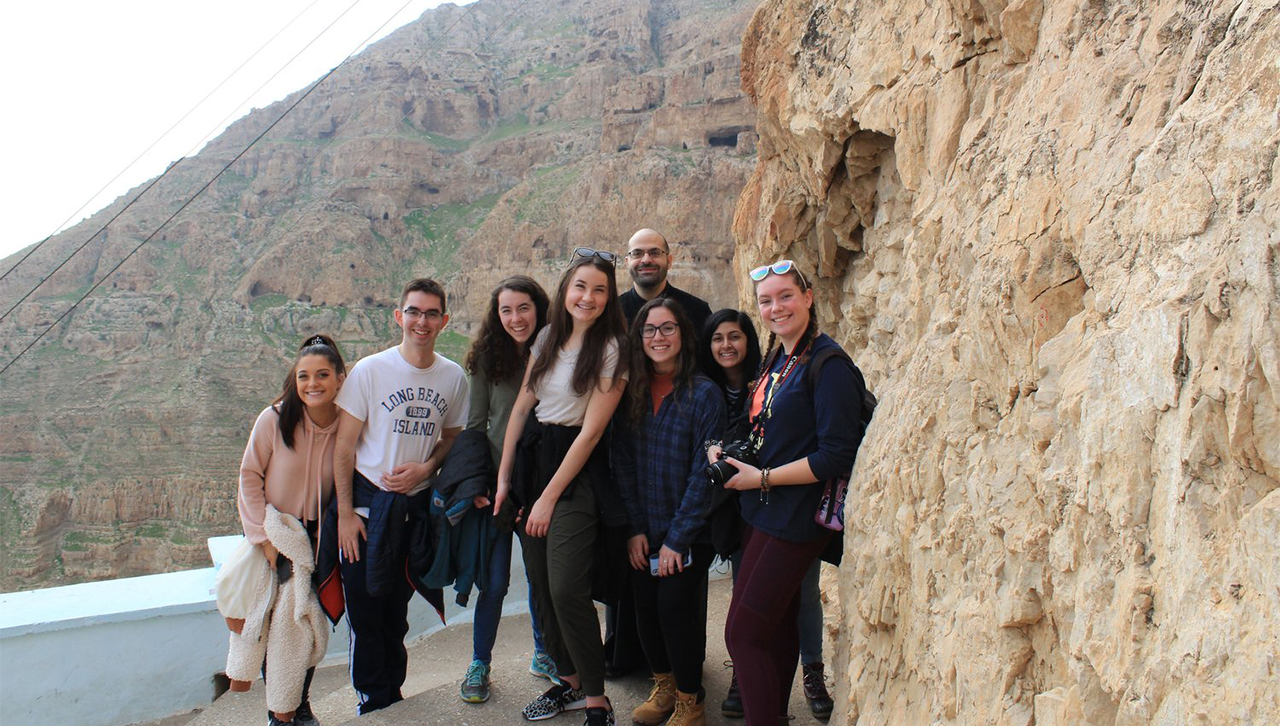Travel Course to Less Known Places in the Holy Land Influences Theology Professor's Research

This article was originally published in AJCU's Connections. This is an excerpt.
A travel course meant to engage students in the present-day lives of Christians living in the Holy Land has led to a new perspective regarding the ancient religious texts researched by The University of Scranton Theology Associate Professor Michael G. Azar, Ph.D. Here, he shares how his course, Christianity in the Middle East, deepened his theological scholarship in unexpected ways.
“The focus of my scholarly work has mostly been the Biblical and patristic periods, but I started this travel course because I was also interested in current Jewish-Christian relations in the Holy Land,” Dr. Azar said. “Now, the contemporary experience informs my scholarship in ways I didn’t really expect. The book I am currently writing on Orthodox Christianity and Jewish-Christian relations focuses not just on ancient theological sources, but also incorporates contemporary Christian-Jewish interaction in the Holy Land.” He never thought he’d be doing both in the same project.
Dr. Azar’s early research focused on the New Testament and the way Christians and Jews interacted with one another in the first few centuries after Jesus.
His first book, “Exegeting the Jews: The Early Reception of the Johannine ‘Jews’” (Brill, 2016), examined Greek patristic readings of the “Jews” of St. John’s Gospel.
Through his research, Dr. Azar began to realize that much scholarly work has focused on Jewish-Christian relations from Western perspectives. What he found missing was the interaction that has existed in the Holy Land for the past 1,500 years.
Continue reading in Connections.






